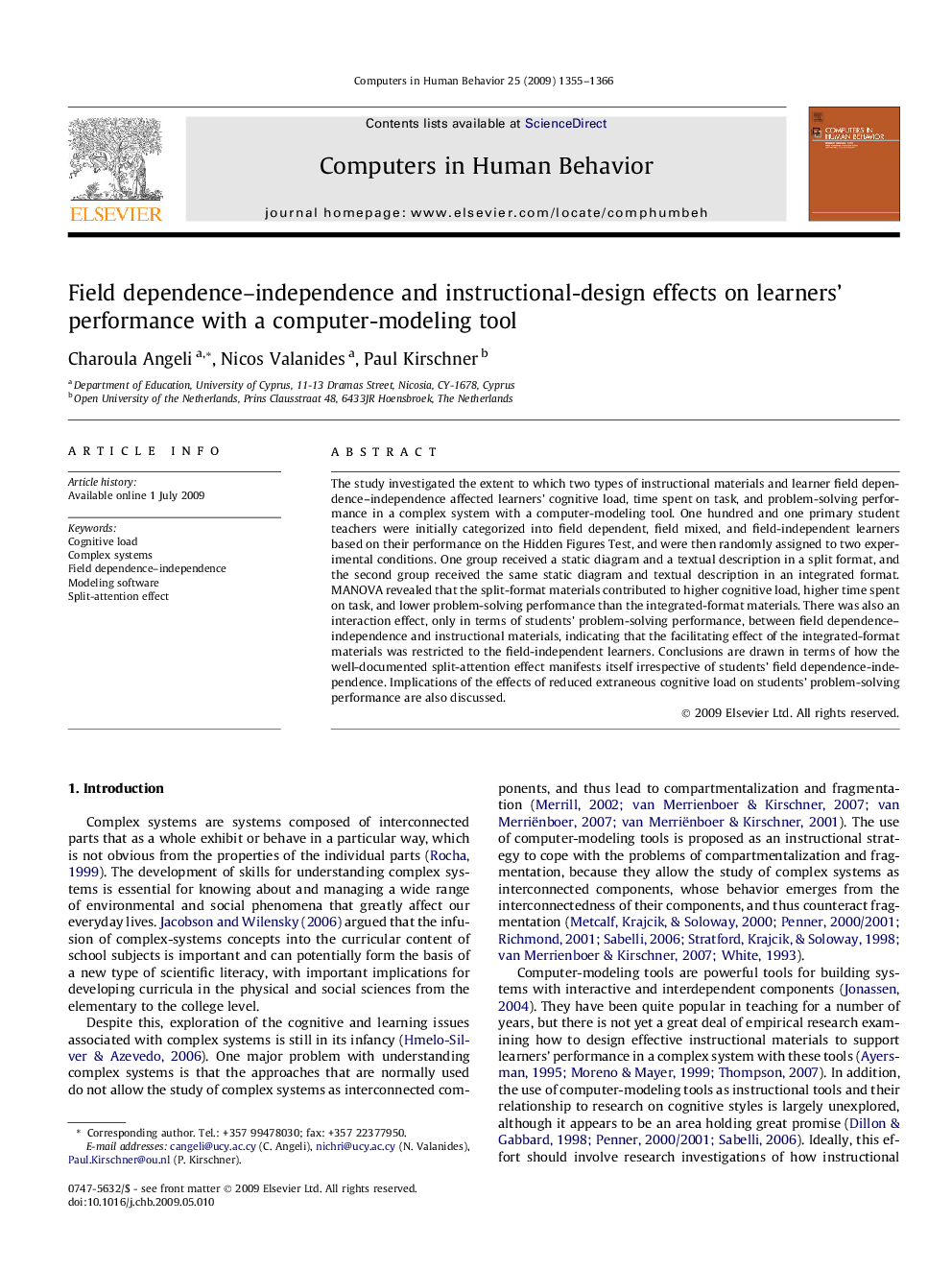| Article ID | Journal | Published Year | Pages | File Type |
|---|---|---|---|---|
| 352149 | Computers in Human Behavior | 2009 | 12 Pages |
The study investigated the extent to which two types of instructional materials and learner field dependence–independence affected learners’ cognitive load, time spent on task, and problem-solving performance in a complex system with a computer-modeling tool. One hundred and one primary student teachers were initially categorized into field dependent, field mixed, and field-independent learners based on their performance on the Hidden Figures Test, and were then randomly assigned to two experimental conditions. One group received a static diagram and a textual description in a split format, and the second group received the same static diagram and textual description in an integrated format. MANOVA revealed that the split-format materials contributed to higher cognitive load, higher time spent on task, and lower problem-solving performance than the integrated-format materials. There was also an interaction effect, only in terms of students’ problem-solving performance, between field dependence–independence and instructional materials, indicating that the facilitating effect of the integrated-format materials was restricted to the field-independent learners. Conclusions are drawn in terms of how the well-documented split-attention effect manifests itself irrespective of students’ field dependence-independence. Implications of the effects of reduced extraneous cognitive load on students’ problem-solving performance are also discussed.
